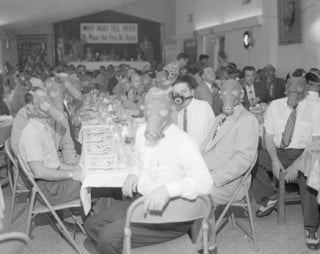Imagine a city, any city, having to contend with smog for three-quarters of a century. Seventy-five years; that’s a lifetime!
Recognizing Los Angeles’ 75-year battle with smog is what this thread is about.
How it happened
On July 8, 1943, Los Angeles smog was born. The smog was so thick, in fact, that area visibility was substantially reduced. And, smarting eyes along with respiratory discomfort, that plus nausea, were the more common associated symptoms.

Initially it was believed that a butadiene plant was to blame. However, when the plant shut down, there was no change. Other things were suspected, but, ultimately, it was the automobile that was identified as the culprit.
Once the source was determined it became crystal clear that a solution was required and the correct one at that.
About smog
What one needs to understand is that smog is typically a warm-weather phenomenon. Light from the sun, oxides of nitrogen (NOx) and hydrocarbons (HC) combine to create ozone. It is this ozone in addition to heat, motor-vehicle emissions coupled with gasoline vapors, chemicals, solvents and paints (volatile organic compounds or VOC), for example, that enable smog’s formation and why such ingredients are referred to as smog-forming emissions.
Easy fix?
That L.A. had been transformed in just this manner, the question was what to employ to best get rid of the smog – or at least lessen its severity. Area air cleanup had become the main preoccupation of that time.
Automobiles were only one of the puzzle’s keys, obviously. With miles of paved roads and highways, scores of automobiles, with a corresponding, downward trend and plummeting usage in public transit (meaning streetcar and interurban trains) due to their elimination beginning most likely in the mid- to late-1930s, was the impetus for the development of smog. The handwriting was on the wall. Driving had become all the rage. Transit buses, meanwhile, took the place of area trolleys and trains.
Strides were made, but population always being a factor, as long as there is population growth, the likelihood that there will be more driving activity, is indeed strong, the two going hand in hand with driving or vehicle miles traveled (VMT) almost always outpacing the rate of population rise.
Port-based and oil-refinery activity are each an added factor in the southern California air-pollution equation. Emissions from these sources are a constant concern and thus are monitored and regulated.

Add to this a trend in the automotive and trucking manufacturing trades to improve vehicle fuel-efficiency standards while industry efforts to significantly reduce tailpipe emissions have done just that.
Better air-days ahead?
But, there is still so much more work that needs doing, obviously as the South Coast Air Basin to which Los Angeles is a part, had in 2017, 145 days in which the air was unhealthy at least preliminarily, this against the area’s 132 bad-air days in 2016.
As to air-cleansing, rocket science, this is not.
That said, change could come provided the will to change exists. Los Angeles needs to get this right as 75 years of episodes of smog in the city has taken a toll.
Here’s hoping Los Angeles and environs have more auspicious and good-air-quality days ahead!

This post was last revised on Dec. 17, 2020 @ 4:08 p.m. Pacific Standard Time.
– Alan Kandel
Utter nonsense. I have lived in LA or Orange County 68 years. You can see the local mountains every day unless there is fog. There is virtually no smog compared to the “old days” of the 60’s. The local weather forecasters who used to warn us about “Stage such and such smog alerts” don’t even both reporting on it……….because there is essentially none to report on.